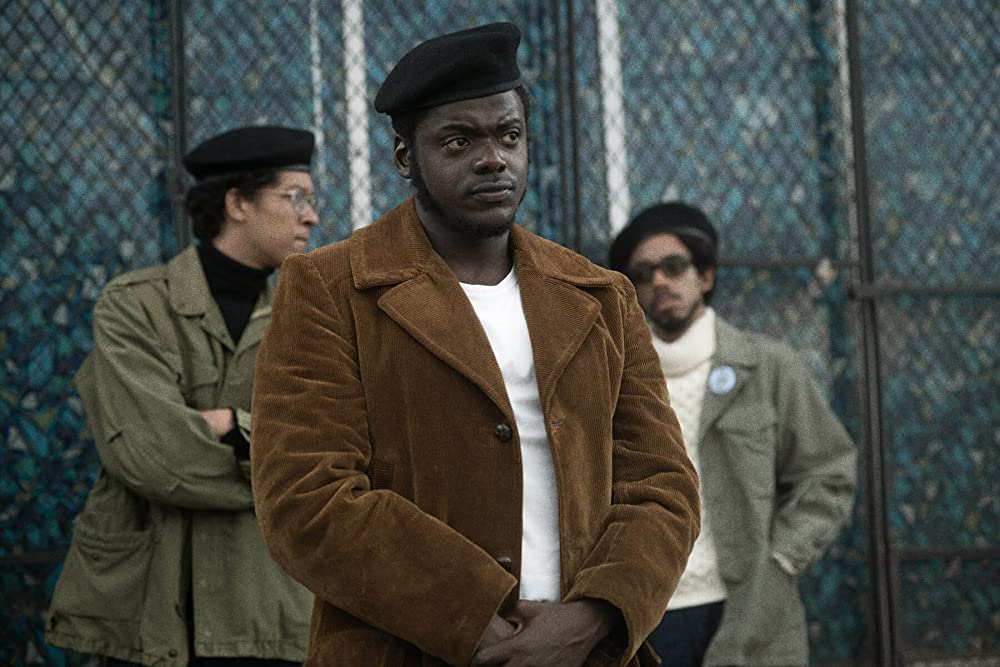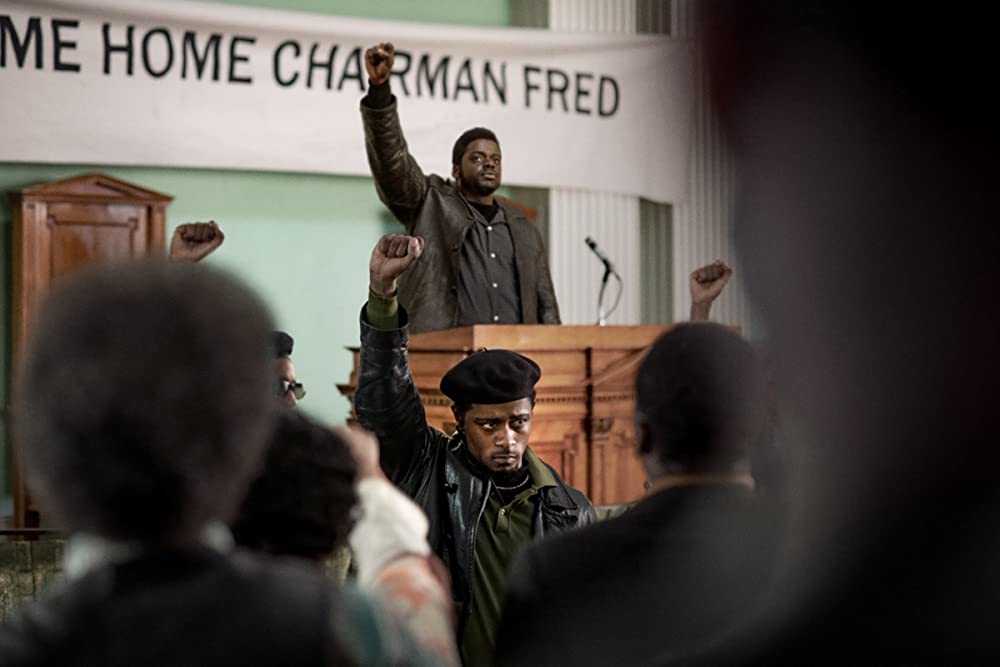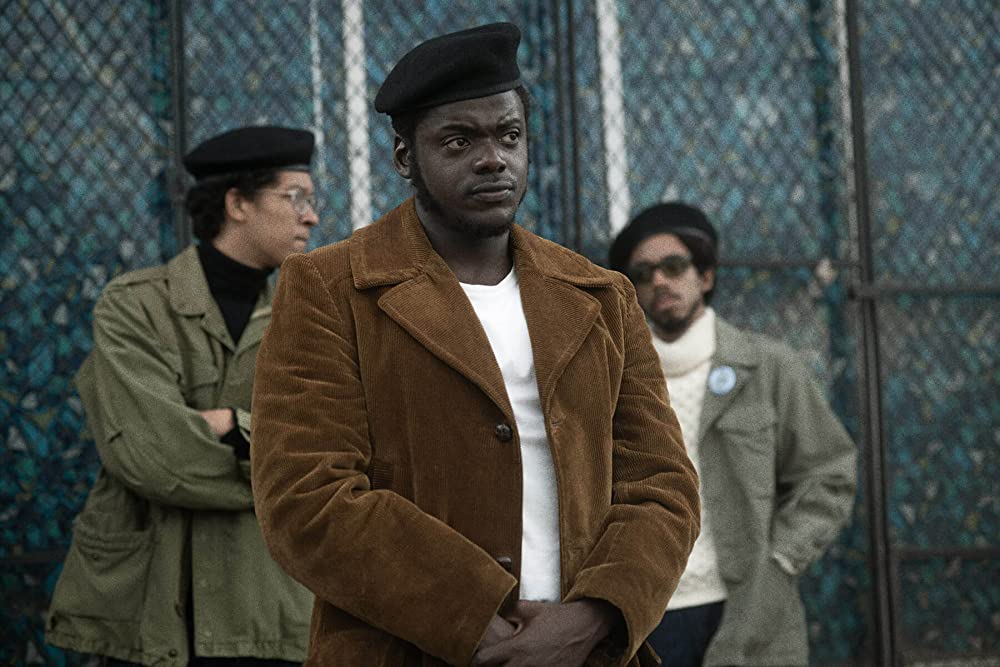By Tilly Long, Third Year, English Literature
From French director Agnès Varda’s kaleidoscopic portrait of the Black Panther Party’s efforts to free Huey P. Newton from prison in California, to the group of Swedish journalists who traveled the US and documented The Black Power Mixtape 1967-1975 (2011), white artists have repeatedly attempted to capture the distinctive tone of the Black Power Movement of 1960s America.
Whilst by no means a biopic, Shaka King’s second feature film Judas and the Black Messiah (2021) is immediately striking from the opening archive footage, labelled with the distributor in bold: Warner Bros. Here we have a counter narrative; a perspective shift from the force fed 20th Century stories which emphatically positioned the FBI as ‘the good guys’ who kept things in line. Hollywood’s undeniable role in reinforcing that viewpoint to the white imagination further invokes the significance of this being a studio movie as opposed to a small indie production.

Too often a footnote in the history books, Fred Hampton was a revolutionary socialist and Chairman of the Illinois chapter of the Black Panther Party. The film succeeds in capturing the radical stances of this Christ-like figure, without sanitising or softening them: ‘Because the capitalist has one goal. And that is to exploit the people.’
A haunting jazz score, teamed with a style of directing that never lets up, grabs us by the neck and takes us through many gulp inducing moments
An illuminating and nuanced look at Hampton emphasises his logic in forming the Rainbow Coalition, which brought together different Black Power groups for common action against poverty and police brutality. In several scenes, he attempts to convince The Crowns to unite with the Panthers in the name of Black Liberation, citing ‘The Free Breakfast for School Children Program’ as an example of their socialist approach.
While Daniel Kaluuya portrays the 21-year-old enigma that was Hampton, and glimpses of his personal life are embodied by Dominique Fishback, who plays his then girlfriend, activist and poet Deborah Jonson, there remains something unknowable about the man. This mystique is utilised through the decision to tell the events leading up to his death through the eyes of similarly puzzling William O’Neal. Introduced as an imposter policeman who dons a large hat to hide his face and loots cars from unsuspecting pub goers, Lakeith Stanfield steals the show as a feverishly insecure accomplice who is instructed to ‘get close to Hampton.’

The FBI, who are evidently terrified of what Hampton stands for from the outset, calling him the ‘single greatest threat to our national security’ and stating a need to ‘prevent the rise of a Black messiah,’ acquire criminal O’Neal after he is caught, who must agree to infiltrate the Panthers. The member of police he is an informant to (Jesse Plemons) is present in a perhaps unexpectedly frequent number of scenes.
However, this is an essential component of the storytelling, as it presents the audience with the part of the story they are most familiar with, before cutting to scenes of Hampton and his forming of revolutionaries through speeches and teaching. Showing the FBI is important as it makes the ‘bad guys’ visible, which seeks to remove Hampton and other radicals from the villain column, which they have often been cast into by many cultural interpretations of the history.
Jordan Peele turns 42 today!
'Paris is Burning': why the trailblazing documentary still shines in 2021
A haunting jazz score, teamed with a style of directing that never lets up, grabs us by the neck and takes us through many gulp inducing moments. O’Neal struggles to keep his cover as a feigned ally with supposed status, whilst relaying blueprints of Panther occupied buildings back to the FBI, which they can then blow up. He is known for his role in the assassination of Hampton, by slipping secobarbitol into his drink so that he would not wake during the police raid, where Hampton was shot in the head. Stanfield expertly depicts the tortured and confused mindset of his titular Judas role, which makes him all the more interesting as a protagonist.
Whilst the film takes extensive dramatic license with its source material, it does provide an extract from the only archive footage of the real William O’Neal, taken from an interview for Eyes on The Prize. This clip furthers the assertion that he was an ambiguous figure right up until his suicide aged 40, who denied having drugged Hampton the night before he was assassinated. ‘I think I’ll let history speak for me.’
Featured: IMDb
Have you seen Judas and the Black Messiah?









